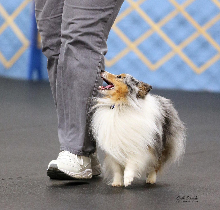Laura's Training Philosophy
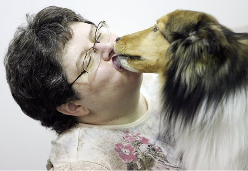
My Dogs Are First and Foremost My Pets
They live in my house. They lay in my lap. The only reason they don’t sleep on the bed at home is because my husband finds it disturbing to his sleep. Out of town trips for dog shows are special treats (for them and me) because in hotels they get to sleep with me in bed. Once a dog has become a member of my family, it will stay a member of the family, with the only exception being if its presence became a hazard or serious detriment to the well-being of other family members or to itself. Fortunately for me that has not happened yet and I hope it never does. This means that I train the dogs I have, for better or for worse, and embrace the unique things that each dog has to teach me.
Participation in Dog Sports Must Benefits the Dogs
My dogs don’t know what scores, titles, ribbons, or placements are, and even if they did I doubt they would see much value in any of it. I compete because I enjoy challenging myself, setting and reaching goals, and striving to be the best that I can be. These are fine reasons, but they are all about my own gratification. I choose dog sports as my arena of competition because I love dogs, love spending time with them, love learning to communicate with them, love watching them figure things out, and love watching them have fun. And I sincerely believe that these things are good for my dogs too. But they could have all the benefits of training without ever leaving our own back yard. Therefore I must always strive to remember that the competing part is for me, and me only. It is my responsibility to keep our showing a positive experience for all of us in exchange for my dogs’ willing participation in my eccentric human activities.
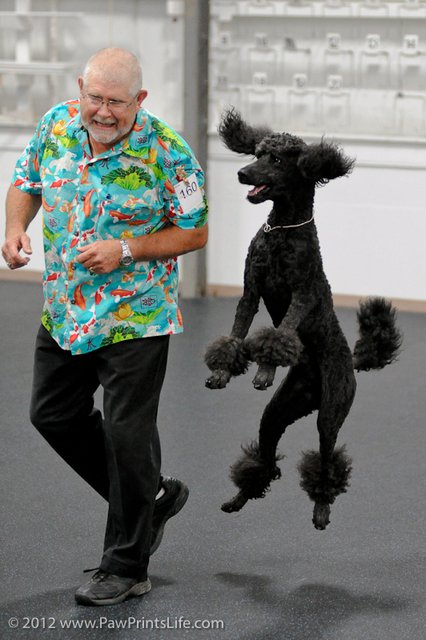
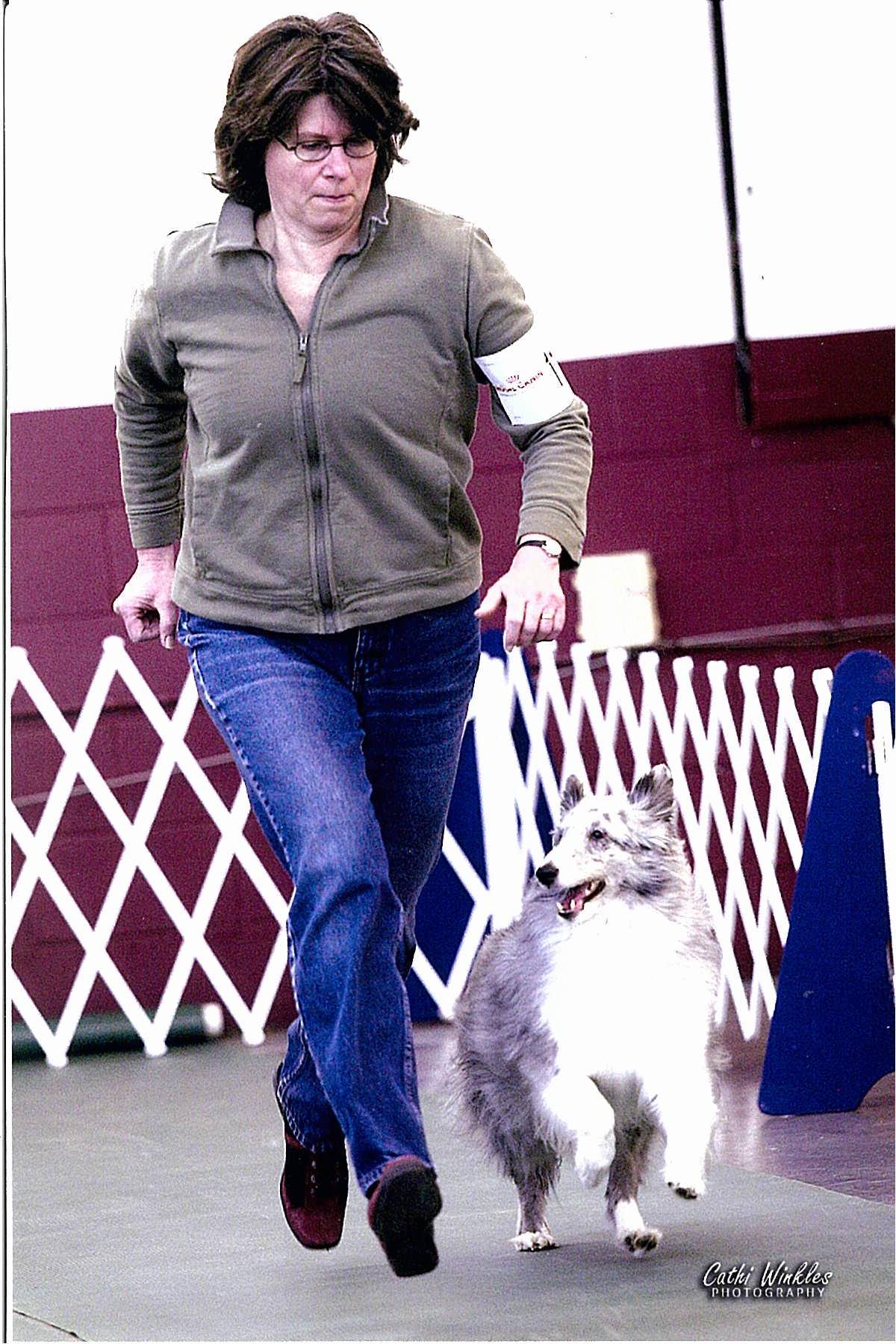
I Rely on Science (Operant Conditioning) to Understand How to Train My Dogs
I am a facts and figures kind of person, and I embrace scientific methodology. The science of Operant Conditioning, as defined by B.F. Skinner way back in the 1930s, describes the multiple ways in which animals (including humans) learn and modify their future behaviors due to the consequences of their previous behaviors. Not everyone knows the terminology or can coherently state the principles, but if learning has occurred and behavior has been modified, then the science has been applied. Understanding the terminology and the principles has enabled me to be a more effective and efficient dog trainer. I don’t expect everyone to dig into the science to the degree that I have, but I do attempt to teach at least some basics to my students because I believe it will greatly benefit their training. I will gladly teach more to anyone who has the desire to learn it.
Positive Reinforcement is the KEY to Attitude
There is one way and one way only, to create or increase a dog’s enjoyment of an activity, and that is through positive reinforcement. Without getting too technical, positive reinforcement is the mechanism where a trainer gives the dog something it wants or likes when the dog does a behavior that the trainer wants. Because the dog is getting rewarded with things it likes, and hopefully often, it develops a very favorable attitude about the activity, the trainer, and everything else associated with the process. The science of operant conditioning describes other ways to get or modify behavior, but none of the others produces these favorable emotions like positive reinforcement can, and in fact, some of them detract from it. Therefore, if you want a dog to like and enjoy training and performance, there had better be generous amounts of positive reinforcement associated with it. Food and toys or play are the most common rewards used, although others are possible, depending on the instincts and temperament of the dog. I find food to be the easiest to use for most dogs, especially in the early training stages.

Positive Reinforcement Is Integral to Everything I Do
Not only is Positive Reinforcement the only way to strengthen attitude, I think it is the best way to work on all aspects of performance, including accuracy, reliability (how likely it is that the dog will do the behavior on the first cue in all situations), latency (how long before the dog starts the behavior after it has been cued), and speed (how quickly the dog does the behavior once it starts). Put another way, when I want to improve performance or fix problems, I have learned that my time and efforts are usually best spent focusing on what modifications I can make to my application of positive reinforcement to improve my results. Any limitations I perceive in the results of my training using positive reinforcement are probably limitations in my skill at applying it rather than limitations in what is possible. Furthermore, training with positive reinforcement should not require any more time in the long run than training with other methods. If it is taking an excessively long time, that is another sign that I have a great opportunity for further improvement of my skills.
I Avoid the Use of Aversive Techniques That Cause Physical Discomfort or Emotional Distress
Aversive techniques undermine the full potential of what I can achieve with positive reinforcement, and they can damage the dog’s attitude about training and/or performing. Below are some methods or tools that I either never have used or that I no longer use for competition obedience training after seeking further education about positive reinforcement.
• Collar pressure of any type, including pulling, popping, or twisting
• Touching the dog anywhere on its body in a way that is intended to be painful or distressing, including
• Touching the dog anywhere on its body in a way that is intended to be painful or distressing, including
pushing, poking, goosing, swatting, scruffing, squeezing, pinching
• Yelling or stern commands
• Prong, choke, or electronic collars
• Yelling or stern commands
• Prong, choke, or electronic collars
But I Can’t Call Myself a Positive Reinforcement Only Competition Trainer
I go by the technical definitions of various training processes as defined in Operant Conditioning. Some of the things I do are technically called extinction, punishment, or negative reinforcement even though they may not seem harsh or cause discomfort. Cautious and limited use of these things can provide clarity to the training and speed up the process, but I remain aware that even these can erode attitude if used in excess. Rather than try to explain the technicalities, let me illustrate what I mean with a few examples.
• When a dog is sent to retrieve a dumbbell and heads towards a treat on the floor instead, a helper
covers the treat with her foot. (negative punishment).
• During heeling, when the dog looks at a distraction the handler stops moving forward and steps
• During heeling, when the dog looks at a distraction the handler stops moving forward and steps
away from the dog (negative punishment).
• When a dog is doing a go out and starts to stray from the ideal straight path, the handler says
• When a dog is doing a go out and starts to stray from the ideal straight path, the handler says
“oops!” and calls the dog back to start over. (Positive punishment).
•When working to perfect fronts the handler waves a dowel held in one hand towards one of the dog's
•When working to perfect fronts the handler waves a dowel held in one hand towards one of the dog's
hips, or even lightly taps the hip until the dog moves away from the dowel to a straighter position
(negative reinforcement).
• When putting any behavior on a cue, if the dog offers the behavior before the cue has been given,
• When putting any behavior on a cue, if the dog offers the behavior before the cue has been given,
the handler ignores it without rewarding (extinction).

My Standards Are A Little Less Strict In Everyday Life
I still try to avoid physical discomfort or emotional distress, but everyday life with my dogs is less structured and controlled than the time and effort that I put into optimizing my training for competition skills. Positive reinforcement requires pre-planning to make sure the reinforcers are handy, and in some cases it requires restriction of the environment to limit choices in the early stages of training. In many cases I don’t need for my dogs to love a particular situation, I just need for them to tolerate it or want them to not be an annoyance to me or the people around me, and I may not be willing to take the time to stop and set everything up to work on an issue with positive reinforcement. Safety also trumps everything else. In the interest of providing a full picture of what goes into my relationships with my dogs, because ring results are a reflection of the total relationship, here are some examples of tools or techniques that I might use outside of competition training.
Restraint for grooming or safety: I always start out with a puppy trying to condition a good attitude about grooming. But eventually I hit a mat with the brush causing a painful yank, or cut a nail too short, and the dog would rather not cooperate any more. I try to do it as gently as possible, but at some point with all of my dogs, I have had to restrain them and insist that they allow me to complete the grooming task. I will also restrain a dog to prevent it from getting through a door, or chasing a distraction we aren't ready to deal with.
Use of a Gentle Leader or Halti for a small or weak person to walk a strong pulling dog: I have always had small dogs, so pulling isn’t that big of an issue for me, but I have had students for whom it was. In the past I might have recommended a prong, but now I would advocate one of the above collars first. I still have students who choose to use prongs for this purpose and I am OK with it so long as it is not misused.
Yelling “Quiet!!!” when the doorbell rings, sometimes followed up with physical restraint: I do have Shelties, after all ;-) You may find it interesting that as bad as my Shelties can be around the house about barking, I haven’t had much trouble with it in the ring, particularly with later dogs once I knew how to make sure it stays out of our competition work.
Recalls: I first build the strongest history of reinforcement that I can, making sure my dogs have hundreds of rewards in a wide variety of situations. But I will go and get a dog that does not respond, and somewhere down the line all of my dogs have had at least one time of stern verbal punishment accompanied by being escorted by their collars with a firm and not necessarily comfortable grip for flagrant disobedience of a recall command after they have had enough training to know what I expect. The recall is the one thing that in my mind is a matter of “have to” with even a high reliability “want to” not being good enough, because I would be devastated if something happened to one of them. I usually don’t need to do this more than once or twice, though, because of their history of positive reinforcement.
Use of a Gentle Leader or Halti for a small or weak person to walk a strong pulling dog: I have always had small dogs, so pulling isn’t that big of an issue for me, but I have had students for whom it was. In the past I might have recommended a prong, but now I would advocate one of the above collars first. I still have students who choose to use prongs for this purpose and I am OK with it so long as it is not misused.
Yelling “Quiet!!!” when the doorbell rings, sometimes followed up with physical restraint: I do have Shelties, after all ;-) You may find it interesting that as bad as my Shelties can be around the house about barking, I haven’t had much trouble with it in the ring, particularly with later dogs once I knew how to make sure it stays out of our competition work.
Recalls: I first build the strongest history of reinforcement that I can, making sure my dogs have hundreds of rewards in a wide variety of situations. But I will go and get a dog that does not respond, and somewhere down the line all of my dogs have had at least one time of stern verbal punishment accompanied by being escorted by their collars with a firm and not necessarily comfortable grip for flagrant disobedience of a recall command after they have had enough training to know what I expect. The recall is the one thing that in my mind is a matter of “have to” with even a high reliability “want to” not being good enough, because I would be devastated if something happened to one of them. I usually don’t need to do this more than once or twice, though, because of their history of positive reinforcement.

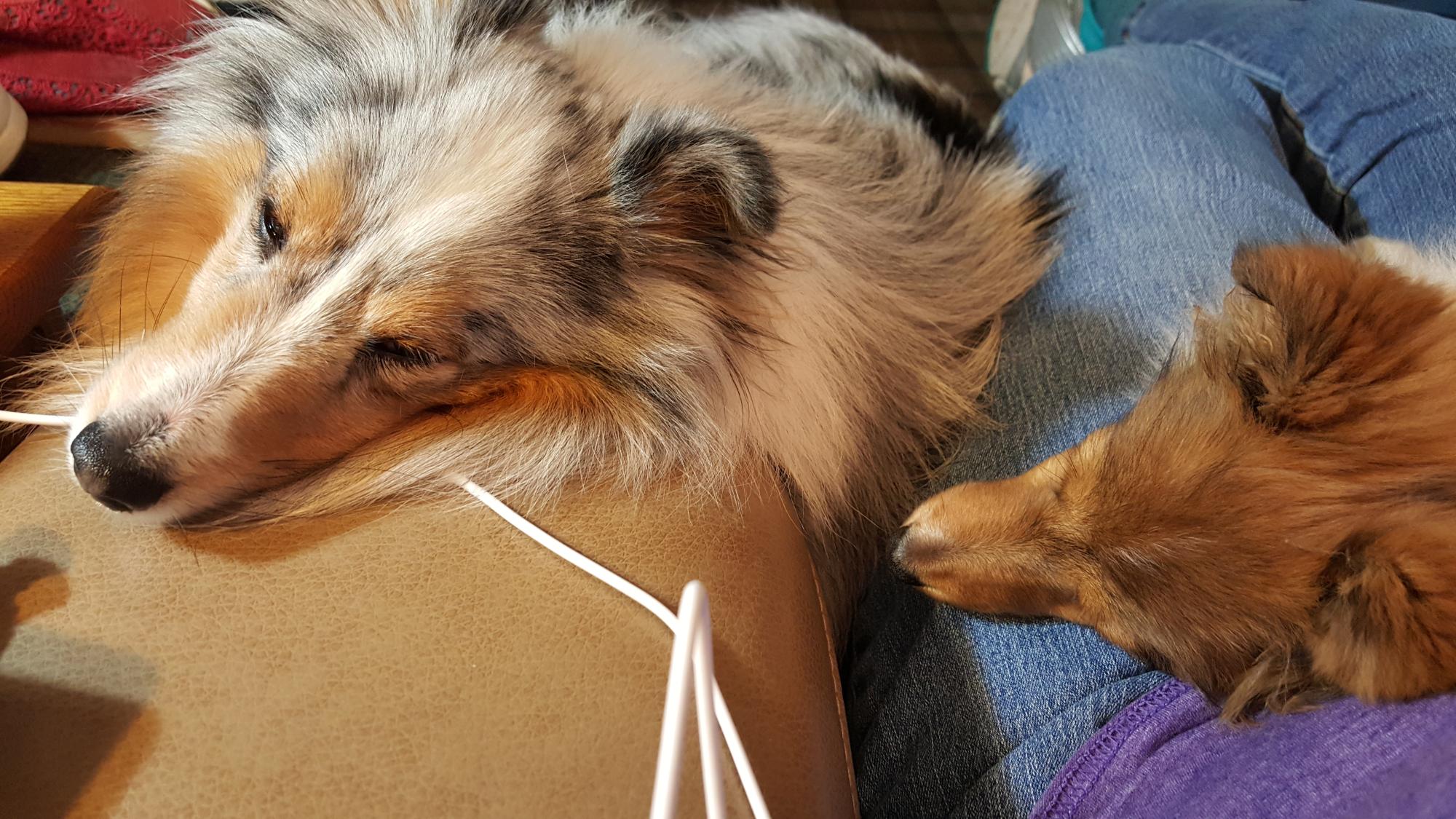
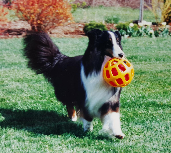
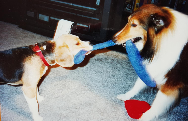
My Training Methods Benefit Me, My Dogs, and Society
One of the coolest things about my chosen avocation is that I truly believe it has made me a better person. Competitive pursuits have the potential to bring out both the best and the worst in people and dog sports are no exception. The worst is when we put too much pressure on ourselves to win and transmit that pressure right down the leash to our dogs, as well as start to feel jealousy and resentment of others. In order to train with aversive techniques, especially those that cause physical discomfort or emotional distress, it is necessary to some degree to suppress one’s innate empathy for the pain of another living creature, and the pressure to win can create further perceived justification to move away from compassion for one’s dogs, one’s self, and one’s fellow competitors.
However, competition shines when it inspires the participant to dig deep, work hard, and learn to perform with a level of skill and expertise that she never thought possible of herself. In the process of trying and failing, and getting up to try again, over and over until progress is made, she builds her self-confidence and self-esteem until losing isn’t a cause for melancholy and self-deprecation and winning isn’t necessary for happiness. Training techniques that focus on maintaining the dog’s enthusiasm for the activity increase the trainer’s sensitivity to the well-being of her dog, and by extension herself and those around her. In short, the world needs more people who are compassionate, patient, and build each other up. Time spent increasing one’s knowledge and skill at using positive reinforcement adds one more small light to the greater good.
You Don’t Have to Completely Agree With Me to Learn From Me
The above may give the impression that I will only work with people who are committed to the same philosophies I am, but that is not the case. Back when I would pop a dog’s collar for lack of attention, I worked with people who chose not to do that, giving them the best that I had to offer within the possibilities that were acceptable to them. Now I will still work with people of differing opinions, but it’s more a case of giving the best I have to offer within the possibilities that are acceptable to ME. There are many accomplished trainers who use physical compulsion, and I am not out to “convert” those who are comfortable with their choices and happy with their results. It is my goal to provide honest and technically correct information about truly effective application of positive reinforcement and to demonstrate how much is possible to anyone who is interested to learn. I am committed to do so while treating all students with kindness and respect.
Below is a summary of my current training methods and the philosophy that drives them. I wanted to keep this simple and straightforward for those who just want to know if what I teach is likely to mesh well with their own training and what to expect from me in a class, lesson, or seminar. Like anyone who has been in the sport for a long time, my methods and beliefs have evolved as I gained knowledge and experience. For more information about the “why” behind this philosophy and how I got to where I am now in my thinking, see Why I No Longer Call Myself a Balanced Obedience Trainer.
Laura & OTCH Flare
Jazz UD & Rodger UD
Karen & Phoebe CDX
Bill & OTCH Coal
Thai UD
Laura & Tango CD RAE
Beth & ASCA OTCH Rumi
OTCH Laser & Ray
OTCH River
Sunny UDX
OTCH HC Bright
OTCH Flare & Friends
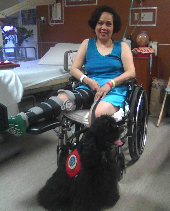
Henry CD P-CDX RE ThD
